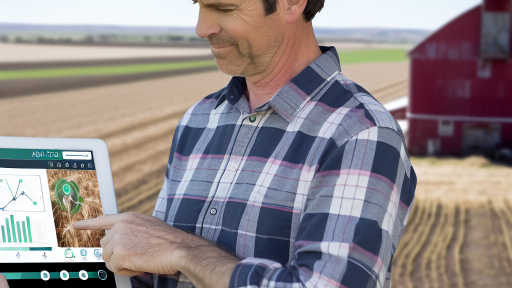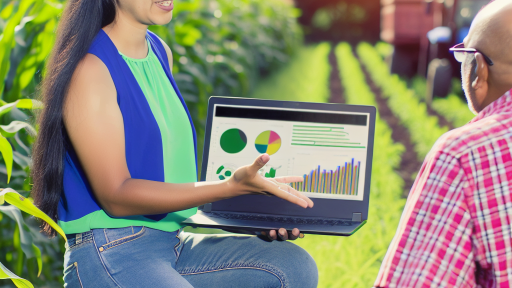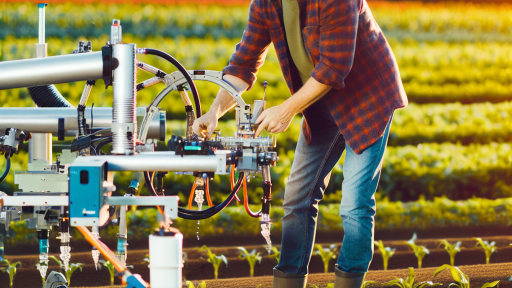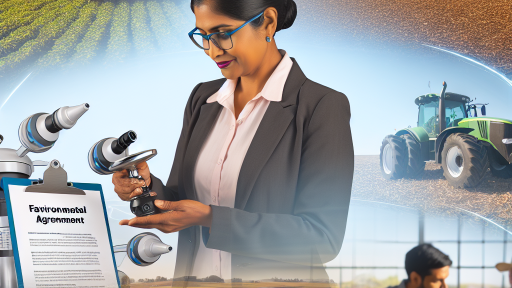Introduction to Remote Sensing in Agriculture
Remote sensing plays a pivotal role in modern agriculture.
This technology enables farmers to monitor crops effectively from afar.
Additionally, it helps in identifying potential issues, such as diseases.
By utilizing satellite imagery and aerial photography, farmers gain valuable insights.
Furthermore, remote sensing allows for precise data collection on crop health.
Benefits of Remote Sensing
Using remote sensing offers numerous benefits for agricultural practices.
Firstly, it enhances the ability to detect crop diseases early.
Early detection aids in timely intervention and reduces crop loss.
Moreover, it allows farmers to implement targeted treatment strategies.
This approach conserves resources and minimizes chemical usage.
Technological Advances
Recent advancements in remote sensing technology have been significant.
For instance, drones equipped with multispectral cameras provide detailed imagery.
These drones can capture data that highlights variations in plant health.
This information supports farmers in making informed decisions quickly.
Additionally, machine learning algorithms enhance data analysis for predictive modeling.
Transform Your Agribusiness
Unlock your farm's potential with expert advice tailored to your needs. Get actionable steps that drive real results.
Get StartedApplications in Disease Detection
Remote sensing techniques are invaluable for detecting various crop diseases.
For example, spectral analysis can identify stress indicators in plants.
This process enables farmers to act before widespread damage occurs.
Furthermore, using thermal imaging reveals temperature differences that signify illness.
Such applications facilitate precision agriculture and improve overall yields.
Challenges in Implementation
Despite its advantages, implementing remote sensing poses challenges.
High initial costs may deter small-scale farmers from adopting this technology.
Additionally, the need for technical expertise can be a barrier.
To address these issues, education and financial support are essential.
Ultimately, overcoming these challenges can lead to more sustainable practices.
Future Prospects
The future of remote sensing in agriculture looks promising.
As technology evolves, accessibility will likely improve for all farmers.
Integration with other agricultural innovations will enhance its impact.
Moreover, collaborations between tech companies and agricultural organizations will emerge.
This synergy can strengthen food security worldwide through better monitoring.
Overview of Crop Diseases and Their Impact on Yield
Understanding Crop Diseases
Crop diseases are detrimental to agricultural productivity.
These diseases can arise from pathogens like fungi, bacteria, and viruses.
Additionally, environmental factors significantly contribute to disease development.
Effective management minimizes yield losses and ensures food security.
Types of Crop Diseases
Several crop diseases commonly affect agriculture.
- Fungal infections such as blight and rust
- Bacterial diseases including wilt and rot
- Viral infections like mosaic and yellowing
Each type poses unique challenges for farmers.
Understanding these diseases helps in implementing effective control measures.
Impact on Crop Yield
Crop diseases lead to substantial economic losses each year.
Infected plants exhibit reduced vigor and lower yields.
Showcase Your Farming Business
Publish your professional farming services profile on our blog for a one-time fee of $200 and reach a dedicated audience of farmers and agribusiness owners.
Publish Your ProfileSevere outbreaks can devastate entire harvests.
Additionally, crop quality often diminishes due to disease.
Economic Consequences
The economic impact of crop diseases is significant.
Farmers face increased costs for disease management.
They may also incur losses from decreased market value.
Due to this, food prices can rise, affecting consumers.
Long-term Effects
Persistent crop diseases can alter agricultural practices.
Farmers may need to change crop rotations and implement resistant varieties.
Moreover, continuous disease pressure impacts soil health negatively.
Ultimately, sustainable agriculture is challenged by the threat of disease.
Technologies and Tools for Remote Sensing
Drones in Agriculture
Drones have revolutionized the way farmers monitor their fields.
They provide high-resolution images and real-time data.
Farmers can detect crop diseases early through drone imagery.
This technology also reduces the time and labor needed for field inspections.
Moreover, drones can cover large areas quickly and efficiently.
Satellites and Their Applications
Satellites offer a broader perspective for monitoring agricultural activities.
They collect data over vast regions, making them ideal for large-scale farming.
Satellite imagery helps in tracking changes in crop health over time.
Additionally, they are useful for assessing environmental conditions.
Farmers can use this data to make informed decisions about their crops.
Ground-Based Sensors
Ground-based sensors complement aerial technologies effectively.
These sensors provide accurate data on soil moisture, temperature, and nutrient levels.
The data collected helps farmers manage their resources better.
Implementing sensors can lead to increased crop yields.
Farmers can optimize their irrigation practices using this information.
Data Analytics and AI
Data analytics plays a crucial role in interpreting remote sensing data.
Artificial intelligence enhances the analysis of complex agricultural data.
Farmers receive actionable insights to improve crop health management.
The integration of AI helps in predicting pest outbreaks and disease spread.
This proactive approach ultimately reduces losses and increases efficiency.
You Might Also Like: Automated Machinery Safety Practices For Farmers
Methods for Detecting Crop Diseases Using Remote Sensing
Overview of Remote Sensing Techniques
Remote sensing employs different techniques to monitor crop health.
Some methods include satellite imagery and drone technology.
These techniques provide valuable data on plant conditions.
Farmers can utilize remote sensing for timely interventions.
Satellite Imagery for Crop Monitoring
Satellite imagery offers a broad view of agricultural fields.
This method enables the identification of large-scale disease outbreaks.
Advanced satellites capture multispectral images for analysis.
Farmers use this data to assess crop stress levels.
Multispectral Analysis
Multispectral analysis evaluates various wavelengths of light.
Showcase Your Farming Business
Publish your professional farming services profile on our blog for a one-time fee of $200 and reach a dedicated audience of farmers and agribusiness owners.
Publish Your ProfileDisease symptoms often cause changes in reflectance in specific bands.
Consequently, farmers can pinpoint affected areas effectively.
Moreover, early detection can significantly improve crop yields.
Drone Technology for Precision Agriculture
Drones provide close-up and detailed imagery of crops.
They can fly at lower altitudes than satellites.
This capability allows for high-resolution data collection.
Farmers benefit from improved disease detection in vulnerable crops.
Thermal Imaging
Thermal imaging is another advanced technique used with drones.
This method identifies temperature variations in crops.
Diseased plants usually exhibit abnormal thermal profiles.
Consequently, thermal imaging aids in quick decision-making.
Vegetation Indices for Disease Detection
Vegetation indices are mathematical formulas derived from remote sensing data.
Common indices include NDVI and EVI, indicating plant health levels.
Farmers can track changes in these indices over time.
Significant drops in values can signal potential disease outbreaks.
Integration of AI and Machine Learning
Artificial intelligence enhances remote sensing through data analysis.
Machine learning algorithms can predict disease spread patterns.
This technology assesses historical data and real-time observations.
Farmers receive actionable insights based on AI predictions.
Benefits of AI Integration
The integration of AI increases the accuracy of disease detection.
Additionally, it reduces the time required for analysis significantly.
Farmers can proactively manage crops, ensuring better productivity.
Explore Further: Data-Enhanced Decision Making for Farmers
Case Studies: Successful Applications of Remote Sensing in Disease Detection
Tobacco Disease Monitoring
Researchers at North Carolina State University used remote sensing to detect tobacco diseases early.
They utilized multispectral imaging to identify infections before visible symptoms appeared.
This proactive approach improved overall yields significantly.
Potato Late Blight Detection
A study in the Netherlands showcased remote sensing for late blight detection in potato crops.
High-resolution satellite images helped monitor leaf health effectively.
Farmers received timely alerts, allowing them to act swiftly and reduce losses.
Citrus Greening Surveillance
Researchers developed a remote sensing technique to track citrus greening in Florida.
They applied thermal imaging to detect temperature variations in trees.
These variations indicate stress caused by the disease.
This method enabled early intervention, saving countless trees from damage.
Wheat Rust Monitoring
The International Maize and Wheat Improvement Center employed remote sensing to manage wheat rust.
Satellite data provided insights into environmental conditions conducive to disease spread.
Farmers utilized this information to implement preventive measures promptly.
Rice Blast Identification
In Asia, scientists successfully applied remote sensing to monitor rice blast disease.
They combined drone aerial imagery with machine learning algorithms.
This innovative approach allowed for accurate identification of infected areas.
The results led to more targeted treatment strategies.
Showcase Your Farming Business
Publish your professional farming services profile on our blog for a one-time fee of $200 and reach a dedicated audience of farmers and agribusiness owners.
Publish Your ProfileThese case studies demonstrate the power of remote sensing in crop disease detection.
By using technology, farmers can protect their crops effectively.
As these techniques evolve, agricultural resilience will likely improve.
Learn More: Cost Savings with Automated Farming Equipment
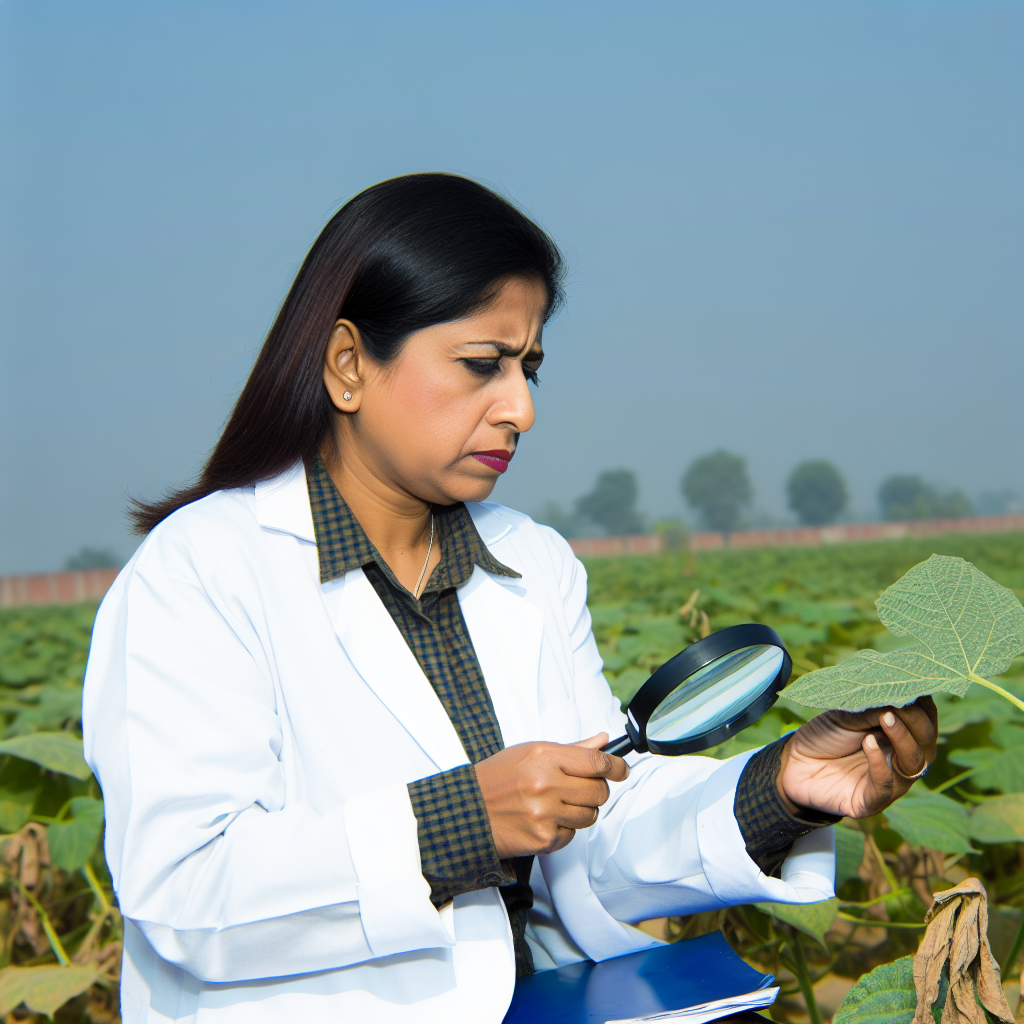
Challenges and Limitations of Remote Sensing in Crop Disease Management
Technological Limitations
Remote sensing relies heavily on advanced technology.
These technologies can sometimes be cost-prohibitive.
Consequently, many farmers cannot access necessary tools.
Moreover, equipment may require specialized training.
This limits the number of individuals who can utilize it effectively.
Environmental Factors
Various environmental conditions can affect remote sensing.
Cloud cover significantly obstructs satellite imagery.
Similarly, dense vegetation complicates data interpretation.
These factors can lead to inaccurate disease assessments.
Consequently, farmers may rely on outdated information.
Data Interpretation Challenges
Interpreting remote sensing data requires expertise.
Many agricultural professionals lack the necessary training.
This can lead to misunderstanding disease severity.
Inaccurate conclusions can lead to ineffective intervention strategies.
As a result, crop yields may suffer significantly.
Cost-Benefit Considerations
The cost of implementing remote sensing can be high.
Farmers must weigh potential benefits against these costs.
Many may find the investment unjustifiable initially.
Furthermore, remote sensing takes time to show results.
This can deter farmers from adopting the technology.
Integration with Traditional Methods
Farmers often rely on traditional disease management methods.
Integrating remote sensing may create additional complexities.
This complicates the training of personnel in hybrid methods.
Moreover, conflicting information can confuse decision-making.
Consequently, a clear strategy is crucial for effective integration.
Explore Further: Key Technologies In Farming Automation
Future Trends in Remote Sensing Technology for Agriculture
Advancements in Sensor Technology
Recent developments in sensor technology enhance data collection capabilities.
These high-resolution sensors provide detailed imagery of crop health.
Furthermore, they help in early detection of diseases affecting crops.
Incorporating multispectral and hyperspectral sensors is becoming common.
Agricultural practices are improving with satellite and drone technologies.
Artificial Intelligence and Data Analytics
Artificial intelligence increasingly plays a vital role in agriculture.
AI algorithms analyze vast amounts of remote sensing data efficiently.
They identify patterns and predict potential crop diseases accurately.
Additionally, machine learning enhances decision-making in farming.
Farmers benefit from timely alerts and suggestions for disease management.
Showcase Your Farming Business
Publish your professional farming services profile on our blog for a one-time fee of $200 and reach a dedicated audience of farmers and agribusiness owners.
Publish Your ProfileIntegration with IoT Devices
The integration of remote sensing with IoT devices is rising.
IoT sensors provide real-time data from the field.
This data complements remote sensing analyses effectively.
Farmers can monitor crop conditions continuously for better health insights.
Moreover, this integration allows for automated responses to crop issues.
Sustainability and Environmental Monitoring
Remote sensing technology promotes sustainable agricultural practices.
Farmers can monitor water usage and soil health through advanced tools.
This approach ensures efficient use of resources during crop cultivation.
Additionally, environmental monitoring helps reduce carbon footprints.
Farmers can adopt practices that align with eco-friendly guidelines.
Emerging Applications and Research
Ongoing research is uncovering new applications for remote sensing.
For instance, tracking emerging pest populations is gaining attention.
Researchers also explore using remote sensing for precision agriculture.
These applications guide farmers in optimizing yield and resource allocation.
Future innovations promise to revolutionize agricultural practices significantly.
Integration of Remote Sensing with Ground-Based Monitoring Techniques
Overview of Remote Sensing
Remote sensing provides valuable data for crop monitoring.
This technology uses satellite and aerial imagery to analyze plant health.
Moreover, it captures data across various spectral bands.
Ground-Based Monitoring Techniques
Ground-based monitoring involves direct observation of crops.
This method uses tools like sensors and drones for detailed insights.
Farmers can assess diseases through visual inspections.
Benefits of Combining Both Approaches
Integrating remote sensing and ground-based methods enhances accuracy.
This approach reduces the risk of false positives in disease detection.
Farmers gain a comprehensive understanding of crop health through this synergy.
Data Validation and Ground Truthing
Data from remote sensing must be validated with ground-based observations.
This process, known as ground truthing, confirms the accuracy of remote data.
Farmers utilize ground truthing to adjust and refine remote sensing models.
Case Studies of Successful Integration
Several farms have successfully integrated these techniques.
For instance, the Johnson family farm used remote sensing to monitor wheat diseases.
They coupled this technology with ground-based checks to enhance crop yield.
Future Directions
The future of agricultural monitoring lies in advanced technology integration.
Machine learning algorithms will enhance predictive capabilities.
As a result, farmers can make informed decisions based on real-time data.
Additional Resources
Plant Disease Detection by Imaging Sensors – Parallels and …
NASA Helps Spot Wine Grape Disease From Skies Above California …

